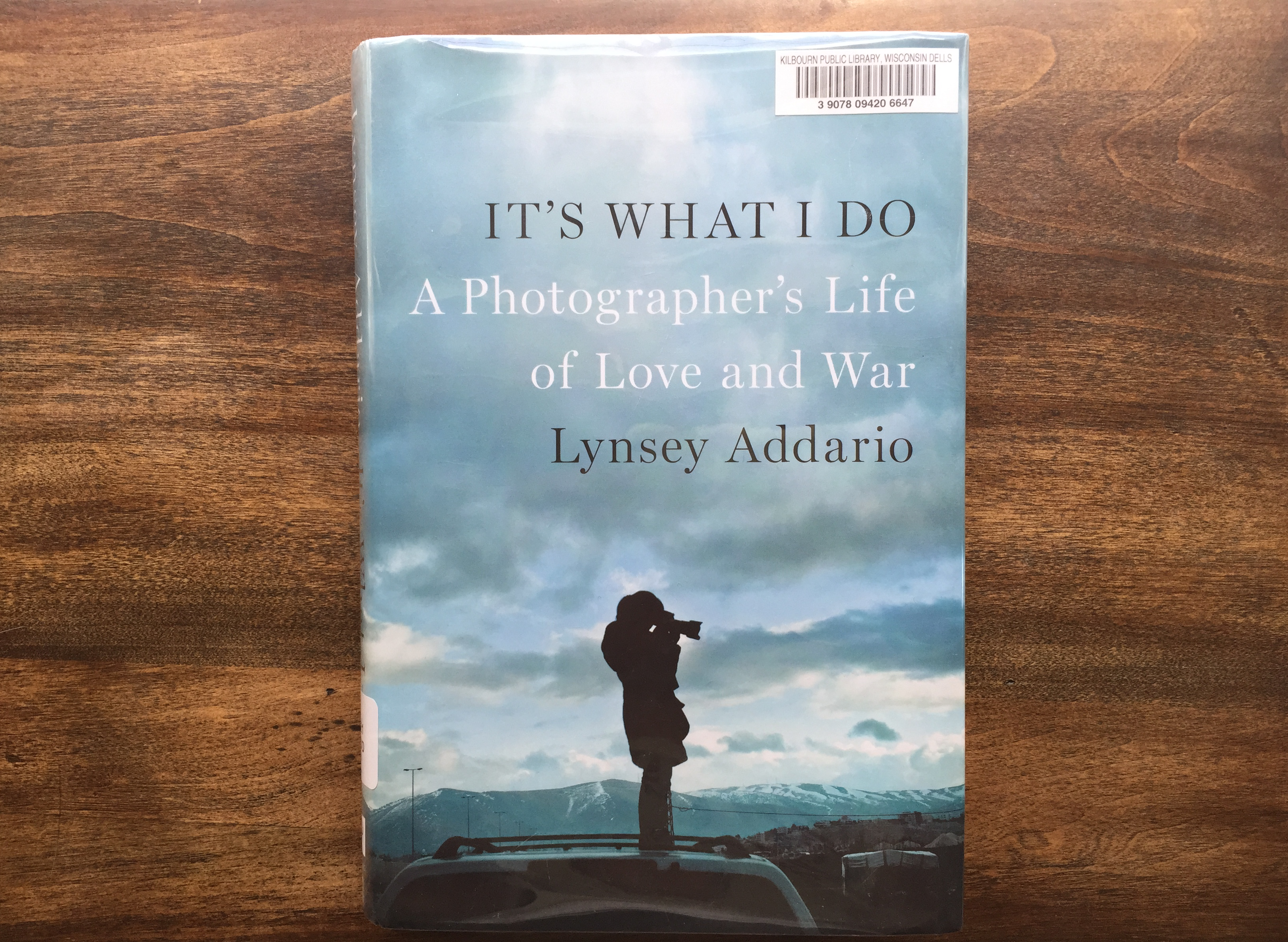
It’s What I Do: A Photographer’s Life of Love and War by Lynsey Addario was a fascinating read. We often see the work of conflict photographers and their journalist cohorts on the front pages of the paper, on the television news, but rarely do we get to see what life is like behind the lens: the bureaucracy that comes with getting a visa while in another country, the inability to speak the language of anyone around you, the difficulty of finding someone and falling in love.
Addario’s memoir of what like is like as a conflict photographer tells not only the story of a photographer facing dangerous situations, but also of a woman in a traditionally man’s world. The barriers women have broken in recent decades are astonishing, but as Addario reminds us, it is not over yet. An additional layer to Addario’s story is that she has spent much of her time in regions where women are automatically treated differently: Afghanistan, Iran, Iraq. Her experiences as a woman doing a “man’s job” in the most male-dominated region of the world are eye-opening, heartbreaking, and compassion-inducing.
Favorite Quotes:
“We [photographers] are greedy by nature; We always want more than what we have.” – p.8
“Even the most experienced photographers have days like this: You can’t frame a shot, catch the moment.” – p.11
“Why do you do this work? Why do you risk your life for a photograph? After ten years as a war correspondent, it remains a difficult question to answer. The truth is that few of us are born into this work. It is something we discover accidentally, something that happens gradually. We get a glimpse of this unusual life and this extraordinary profession, and we want to keep doing it…” – p.15
“For me, the conundrum is never whether or not to go to Egypt or Iraq or Afghanistan; the problem is that I can’t be in two of those places at once.” – p.21
“But after years of witnessing so much suffering in the world, we find it hard to acknowledge that lucky, free, prosperous people like us might be suffering, too… We don’t listen to the inner voice that says it is time to take a break from documenting other people’s lives and start building our own.” -p.22
“Something I had perceived until that moment as a simple means of capturing pretty scenes became something altogether different: it was a way to tell a story.” – p. 36
“Without a shared language, the conversation ended with the handshake.” – p.68
“It had been naive of me to think that, given all the repression women in Afghanistan were facing – their inability to work or get an education – wearing a burqa would be high on their list of complaints. To them, the burqa was a superficial barrier, a physical means of cloaking the body, not the mind.” – p.76
“It was the first time I had to decide between my personal and professional lives. Some part of me knew, or hoped, that real love should complement my work, not take away from it.” – p.85
“The Americans wanted to bring democracy to Iraq, but a convenient form of democracy that allowed them to censor the media… We were allowed to cover only what the people with guns wanted us to see.” – p.140
“I knew that trauma accompanied the work of a conflict photographer – we had all heard about the drinking, drugs, and suicides of the previous generation of war correspondents – and I wanted to take control of my own response… I did not want my response to kidnapping to be escape.” – p.164-5
“Only among Muslims is the hospitality so great that they cannot bear the notion that someone’s tea will be left untouched.” – p.254
Note: The nature of Addario’s photographs are often violent and bloody – the book and the photos within are not for the faint of heart. However, I recommend this book to anyone willing to wade through the sadness and uncomfortable moments to discover a way of life wholly different from your own, to see another culture from the viewpoint of a pure documentarian.
Have you read a memoir recently that showed you a entirely different viewpoint than your own? If so, what? And would you recommend it to others?
If you do read It’s What I Do: A Photographer’s Life of Love and War by Lynsey Addario, I’d love to hear what you think!

Leave a Reply